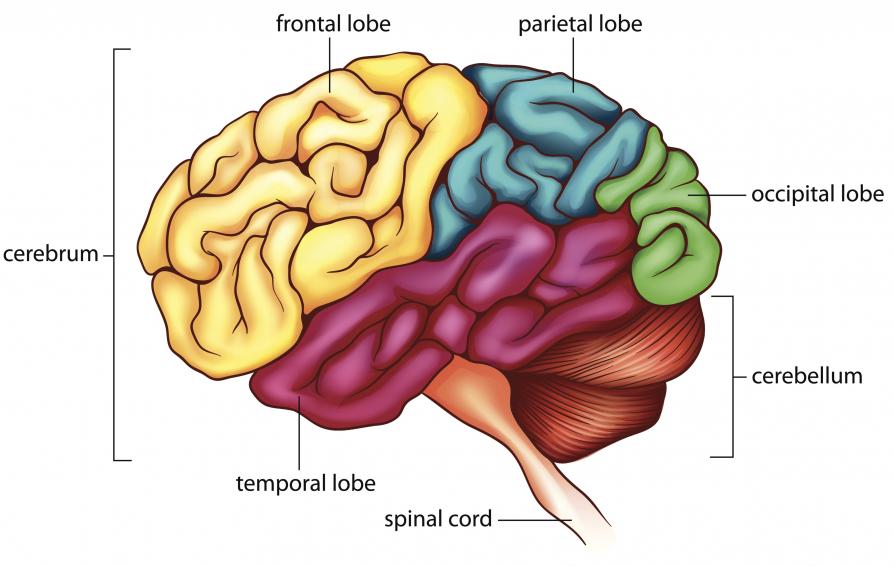
Brain Stimulation and Boomerang LIFE

Intellicare Group has demonstrated that Boomerang LIFE can reduce disruptive behaviour in seniors with Alzheimer's and dementia. However, we wanted to know why that happens and what areas of the brain are triggered when using Boomerang LIFE. The brain is a hugely complex part of the human body that is still not quite fully understood. Add to that the effects of dementia and memory impairment and it’s hard to say what we know about the brain and what stimulates it. Boomerang LIFE is a new tool designed to stimulate several key areas in the brain through its engaging material.
One of the key areas of the brain stimulated by Boomerang LIFE is the temporal lobe. This houses several structures stimulated by the sounds, emotions, and memories evoked by Boomerang LIFE. The limbic system, which is said to control the expression and experience of emotions, is mostly contained in the temporal lobe (Purves et al., 2001). The limbic system is composed of smaller organs that work in together when people are exposed to emotional stimuli. The thalamus, hippocampus, amygdala, cingulate cortex, and smaller portions of the pre-frontal cortex and basal ganglia compose the limbic system.
Also located in the temporal lobe are the other areas involved in memory storage and formation. The medial temporal lobe (literally the middle of the temporal lobe) stores short-term and declarative memory – which is memory that can be recalled consciously (Purves et al., 2001). For example, responding to a question on the Popular Sayings DVD in an example of an individual accessing their declarative memory by consciously recalling the idiom. There are a few specific structures that are very important in regards to memory. The hippocampus, located in the medial temporal lobe is especially important in creating and consolidating new declarative memories. The amygdala is another important brain structure in the temporal lobe that is involved with emotional memories (McGaugh, Cahill, Roozendaal, 1996). There are many other areas in the brain that are associated with memory, but most areas related to memory storage and emotional memories are located within the temporal lobe.
The brain is a very interrelated organ – different areas of the brain located in different lobes are often working in cohesion when performing a certain task. Two of these areas are Broca’s Area and Wernicke’s area – two areas of the brain triggered by Boomerang LIFE’s auditory portion. Located mostly in the temporal lobe, Wernicke’s Area is involved in speech comprehension (Boeree, 2004). When the leader is reading out the information of the Boomerang LIFE Flash Card, Wernicke’s Area is analyzing the speech for context, grammar, definitions and other information that allow us to understand what is being said. Broca’s Area, located in the Frontal lobe, is involved in speech production – it sends out signals to the motor areas of our brain so that individuals in a group session of Boomerang LIFE can share their experiences with the group.
The Frontal lobe also plays a large role in a Boomerang LIFE session. The frontal lobe is where most of a human’s higher processing occurs, such as planning, attention, and language-processing (Stuss & Knight, 2013). There is no one specific area of the pre-frontal cortex that is involved with a specific task. While some areas of the brain, such as Broca’s Area and Wernicke’s area, have a lot of evidence to support the theory they handle speech production and comprehension, the frontal lobe’s activities are more dispersed. The lateral (back) frontal cortex is more strongly involved in controlling our impulses or distractions. When using Boomerang LIFE products, an individual is often using their executive functions via the frontal cortex. Whether it be planning what to share in a group, or controlling yourself from getting distracting when looking at flash cards.
Boomerang LIFE is a very visually rich program, so it goes without saying that the occipital lobe, which is in charge of our vision, is stimulated by the programs. The occipital lobe receives incoming images, processes them, and sends it out to other parts of the brain for analysis and meaning. To explain further, the occipital lobe will receive the image of a child holding a flower, process it, and send it to another area of the brain, such as the limbic system, where it triggers an emotional memory of picking flowers as a child.
Through this process, you can begin to see how interactive and connected the brain is, and how Boomerang LIFE is able to stimulate many areas of the brain. While we may never fully understand the brain, researchers are coming closer each day and we can already see what areas are effected by certain stimuli.
